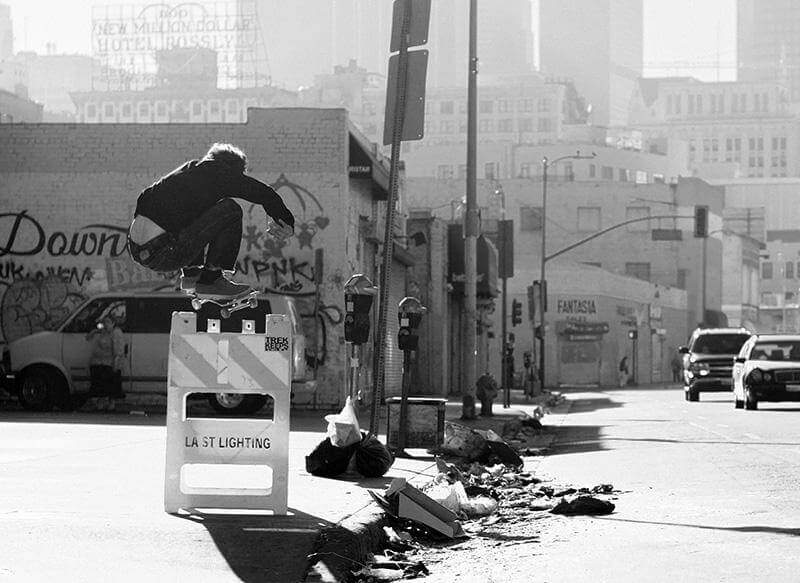![]()
Source: SKATE
Project + Exec is a new series where I’ve decided to seek out footwear executives who are minorities (Black, Latino, Indian, Native American, Asian men and women) who are doing some dope work, but are being overlooked by the larger media outlets. It’s my small part. I hope you enjoy the intro. I really hope you look more into the brands and people behind them.
In an article yesterday I made the statement that Hip-Hop transformed the sneaker industry. In stating that Hip-Hop is at the core of the current growth of athletic apparel becoming casual attire, I left out another element, skateboarding. While skating isn’t officially an element of Hip-Hop and can more than likely be affiliated with punk and other counter culture movements, skate has also been extremely important to the rise of sneakers in casual wear. If you’ve visited this site before you’ve seen my discussions on San Diego and the skate culture there. In Los Angeles, particularly Venice/Dogtown, the tradition and influence of skate transformed a culture into billion dollar industry and made street skaters millionaires.
How did skate transform footwear? Skaters were using basketball court shoes and tennis shoes to skate in. The basketball shoes and tennis shoes from adidas, Puma and Nike had stronger material than Converse and they also had more protection with high impact cushioning systems. The shoes weren’t made for skate though. Skaters would have to add padding under the tongue on shoes, they’d burn through kicks in weeks. Skaters began to develop their own brands. A strange thing happened along the way however. DC, Etnies, CLAE all were undercut by the behemoth Nike and their SB brand, which to many in skate culture represented a corporate, intrusive element. Nike’s machine was powerful and began to steamroll brands until Supra arrived. In 2006 Chad Muska developed the Skytop. Supra signed Stevie Williams and at one point had Lil Wayne on board as an endorser. The brand crossed over, but with that crossover came a number of adjustments that required a stronger foundation. The brand was sold to KSGB in 2016.
![[ PLEASURE PACK ]](https://arch-usa.com/wp-content/plugins/wp-fastest-cache-premium/pro/images/blank.gif)
Anyone who knows me, understands that I don’t like Groups who acquire brands. What typically happens is the brand becomes a bargain basement brand and ends up like And1… selling at Wal-Mart with everything that made it dope, wiped out. Supra, however has adjusted to the hype which has settled considerably and the acquisition, by grabbing some of the industries dope young talent to recreate the brand into what it was: A subversive force with footwear and apparel designed by the riders, for the riders (BTR_FTR) which has a dual meaning. In street culture a rider takes on the mission and completes it. A rider is the person who stands with you until the end.
Creative Director at Supra, ACE RICE, is helping to guide Supra into its next iteration getting the brand back to what it was, sans the hype. His ethos is creativity + grind = problem solving. At a moment when Black executives are being overlooked by important media outlets, ACE is one of the many important components within a revitalized Supra Footwear that could inspire a Vans styled resurgence in 2018.
This is my shout out to Ace and Supra and if you haven’t seen what the brand is up to, this is also an introduction to a couple of pair you should definitely check out: https://suprafootwear.com



